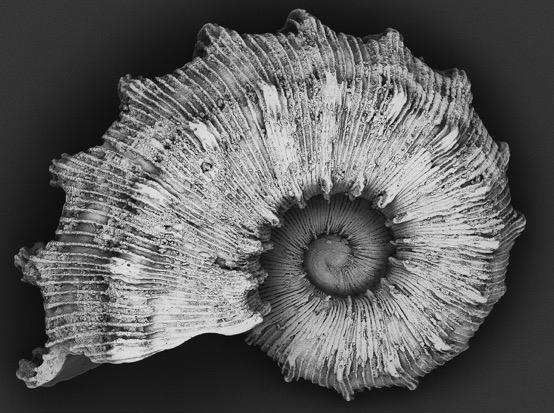05.08.17 | “I cut stones so thinly you can see through them.” Expressed in numbers, Sebastian Flotow explains, this means to a thickness of about 28 thousandths of a millimetre; in figurative terms, about half as thick as a hair.
The demand for such delicate wafers of rock or calcium carbonate skeletons comes, above all, from the ZMT researchers who study sediments, the ocean floor, sandy beaches and coastal silt. Scientists in all fields across the world entrust their geological and biological samples to Flotow’s skilful hands. “With the equipment we have, we can determine materials and do element analysis or iden- tify the structure of microorganisms.”
From the macro- to the microcosm
Sebastian Flotow is a preparator specialised in geology and palaeontology and also a trained carpenter. The differ- ences between these fields are not so very big, according to the modest member of ZMT’s technical staff. Whether you are using a mineralogical saw or a panel saw, you al- ways have to work precisely, and even with the scanning electron microscope it was really just a case of setting it as precisely as possible for the task in hand. Sebastian Flotow is a sought-after craftsman in his field. With his ex- perience, he assesses the physical effects that could be produced by the SEM and patiently prepares it so that eventually the structures in the microcosm become as vis- ible as possible.
ZMT’s many Ph.D. students come to his lab with a diversity of samples and perspectives that enthuse him. Flotow is ambitious when it comes to fulfilling special requests. He takes the time to decide whether the desired goal would be better served by a partially ground surface or a fracture surface, and how he can ensure that none of the valuable minerals get shredded during the cutting process. Such concentrated effort pays off, he says. “The result is better for everyone, and I enjoy achieving it.”
Amidst sailors and scientists
Sebastian Flotow’s technical expertise is also coveted on the research vessel. He sometimes constructs special de- vices for scientists heading for the Tropics or supervises the transport and operation of the equipment on the ship when, for example, sediment samples are being taken. The sailors operate the winch with the gripper jaws, but lifting and sifting the sediment and collecting the dust is his job. What sounds straightforward enough, is actually complicated in a scientific setting. “Work on board is al- ways extreme,” he laughs, but he still occasionally enjoys swapping his workshop and lab in Bremen for the high seas.
When the technical world is under control, the passio- nate craftsman allows himself to indulge in investigating the miniature worlds. He particularly loves imperfectly washed samples. On a planktonic foraminifer with a calcium carbonate skeleton that is as tiny as a pinhead for in- stance, you can discover much smaller structures and microorganisms like diatoms and radiolarians. “Diatoms are basically made of glass. They build a silicate skeleton, and it is wonderful to observe.”
Sebastian Flotow belongs to ZMT’s Department of Infrastructure and is the main contact for the Thin Section Labora- tory as well as for light and scanning electron microscopy. He provides technical support for the preparation of sample material. The Thin Section Lab and SEM are two service facilities at ZMT with an extensive array of equipment for marine analysis and detailed study of the ultrastructure of geological and biological samples.
Author: Bettina Mittelstrass





